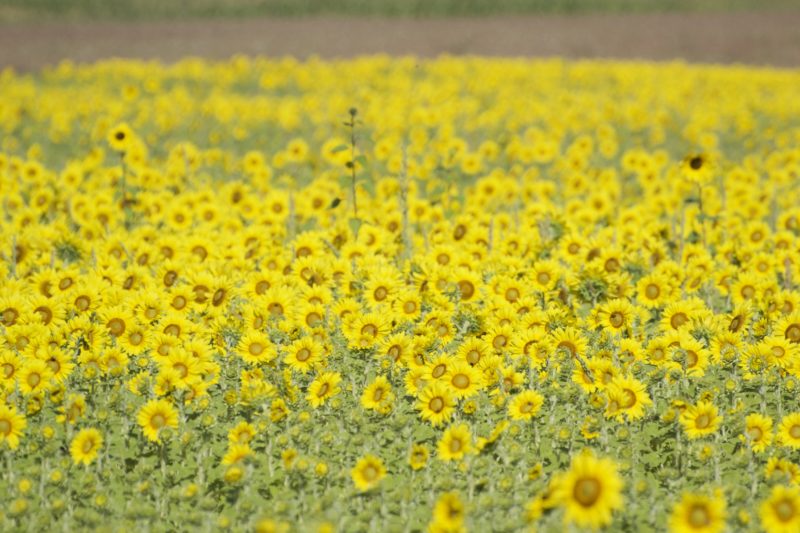 Sunflower fields are a gift of fall – particularly for those of us who like to photograph. The colors, the strong forms, the way they attract wildlife all make me visit them again and again. They also seem to elicit a lot of associations from poets, composers, film makers and so on. (My generation will remember Sophia Loren and Marcello Mastroianni in Sunflower if only for Mancini’s saccharine musical score that was whistled across all of Europe in 1970.) I’ll spare you.
Sunflower fields are a gift of fall – particularly for those of us who like to photograph. The colors, the strong forms, the way they attract wildlife all make me visit them again and again. They also seem to elicit a lot of associations from poets, composers, film makers and so on. (My generation will remember Sophia Loren and Marcello Mastroianni in Sunflower if only for Mancini’s saccharine musical score that was whistled across all of Europe in 1970.) I’ll spare you.
For a poem I chose William Blake’s Ah Sunflower, because it reflects autumnal transience in better ways than I could possibly offer. It also gives me always a kick to read about something that looks like 8 simple lines and then learning what they could possibly stand for. Or, more precisely, how scholars fight over potential meanings. Is the Ah a sigh? Of delight? Of surprise? Of pity?
It also gives me always a kick to read about something that looks like 8 simple lines and then learning what they could possibly stand for. Or, more precisely, how scholars fight over potential meanings. Is the Ah a sigh? Of delight? Of surprise? Of pity?
Your guess is as good as mine, or, come to think of it, probably better than mine. I say this because I was also completely clueless when it comes to the symbolism of the sunflower (again, offered by scholars): a “fallen” human, or persistent love, or frustrated love, or lost innocence, or corrupted love, or poetic imagination, or spiritual yearning, or all of these?” Oh, (sigh of irritation) the things I don’t know. Here is Wikipedia to the rescue. https://en.wikipedia.org/wiki/Ah!_Sun-flower
Attached below are Benjamin Britten’s take on the poem
and a Ginsberg reading of it.












Tricia
Thank you for these lovely images.
Steve Tilden
Another interesting aspect of sunflowers is the arrangement of seeds flows in the spirals defined in the Fibonacci series, the golden rectangle.
Martha Ullman West
Friderike, the photos are glorious as is Blake’s poem, and no one can ruin poetry better than scholars so I decline to follow your Wikipedia link!
Deb
I totally agree with Martha Ullman West! Beautiful pictures, sunflowers always bring a smile to my face!